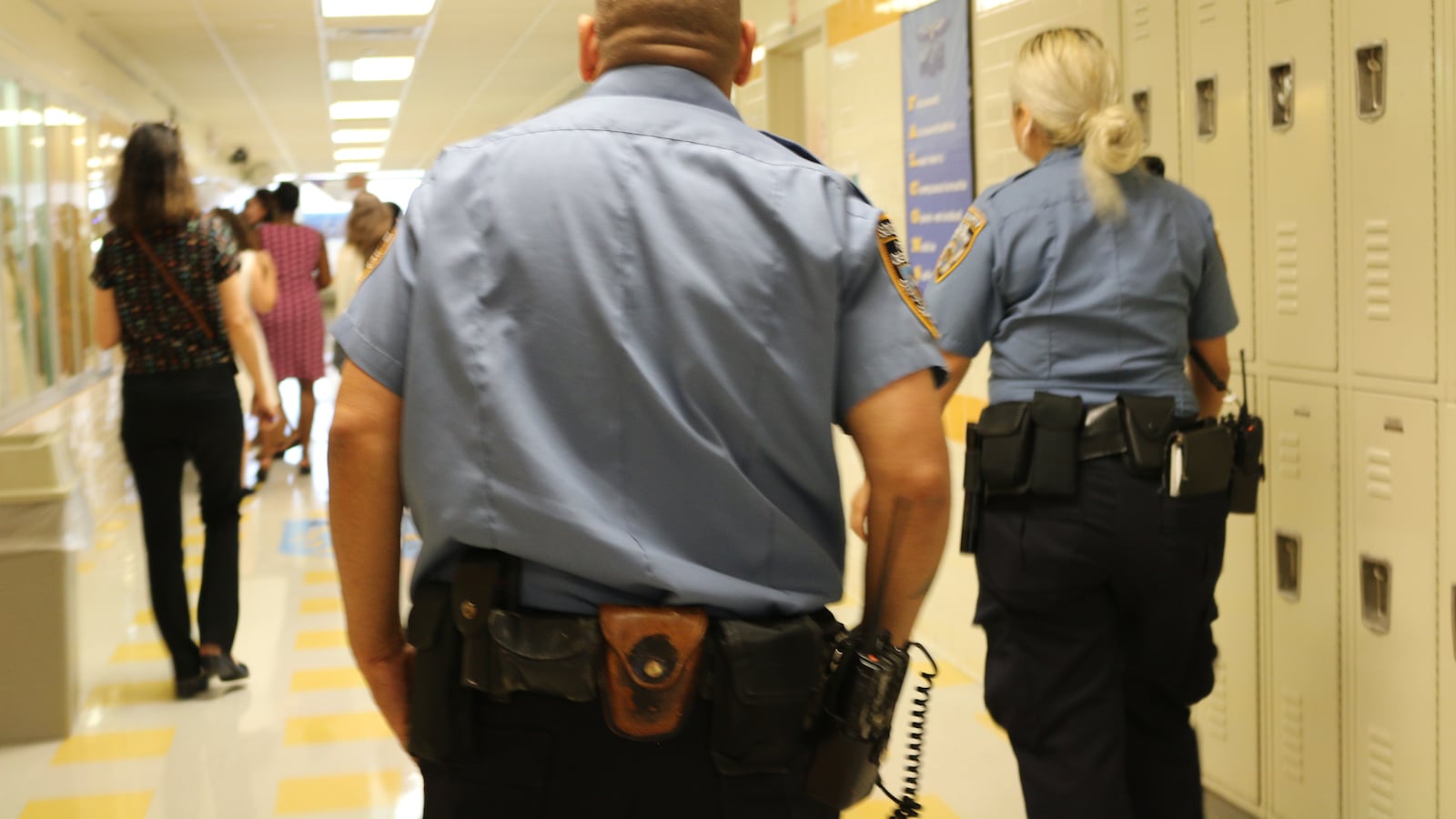After a one-year jump in suspensions, New York City schools are suspending students less frequently this school year, according to data released Monday.
From July through December 2018, schools issued roughly 12,500 suspensions, a 14 percent decrease over the same period last year. If that trend continues, it will likely reverse a spike in suspensions last school year, which saw the first increase since Mayor Bill de Blasio took office in 2014.
During the first half of this school year, principal suspensions — which last five days or less and are issued for less serious offenses — decreased 12 percent. Superintendent suspensions, which cover more serious misbehavior and can last up to an entire school year, decreased 20 percent.
LaShawn Robinson, deputy chancellor for school climate and wellness, said the reduction in suspensions is connected to a wider effort to limit suspensions as the main way educators address misconduct.
“We’re looking at ways to keep children in learning environments while addressing their underlying needs,” she said.
The city’s statistics also show that average suspension lengths have fallen 30 percent in the first half of the school year, first reported by Chalkbeat on Monday.
The education department is required to release the suspension statistics under city law by March 31 — officials acknowledged the data was late but it was not clear why.
De Blasio has championed policies that make it more difficult to suspend students, including requiring schools to get permission from department officials before suspending students for certain infractions and limiting suspensions in early grades.
Discipline reform advocates have generally cheered the drop in suspensions, which have fallen roughly a third since de Blasio took office in 2014, despite last year’s increase. But those policies have also sparked criticism from some educators who say the changes have made schools more chaotic.
While the city has made efforts to train educators on “restorative” approaches — such as mediation, in which adults or peers encourage students to talk through conflicts — union officials argue there hasn’t been sufficient training and that those efforts have not reached enough schools.
Although the latest statistics do not include racial breakdowns, students of color are generally overrepresented. Last year, about 46 percent of the city’s suspensions went to black students, even though they represent 26 percent of the student population.
Black students in particular are more likely to receive harsher suspensions for certain infractions compared with their peers in other racial groups, according to the city’s Independent Budget Office. And some research has suggested suspensions in New York City have contributed to negative academic outcomes. Officials said they are “analyzing” infractions where there are disparities in suspension length between racial groups.
In recent months, advocates have rallied in support of a new suite of changes that would further limit suspensions, including capping their length to 20 days. Last school year, suspensions ticked up about 4 percent, an increase schools Chancellor Richard Carranza linked to a fatal school stabbing. (Major crimes in schools decreased about 4 percent during the first half of the school year, according to police department statistics.)
Top city officials have said more policy shifts are coming. The mayor has tasked Carranza with reviewing the discipline code, the manual that dictates how educators respond to student misbehavior.
“If we’re satisfied with what our system produces then we’re not looking at the data,” Carranza previously said.
Education department officials emphasized that they have expanded districtwide restorative justice trainings in Manhattan’s District 5, Bronx District 12, and Brooklyn’s District 16 in the past year in addition the existing program in Brooklyn’s District 18 — and have increased anti-bias training. Officials also said superintendents review suspension data on a monthly basis and help intervene in schools that appear to be having discipline problems.
The education department also reported Monday on the number of times students were taken away by emergency medical personnel due to an emotional or psychological condition. From July through December 2018, 556 students were taken away for that reason, roughly the same as the previous year. Overall, the number of times students were transported from schools by EMS for any reason decreased nearly 6 percent to roughly 4,300.

